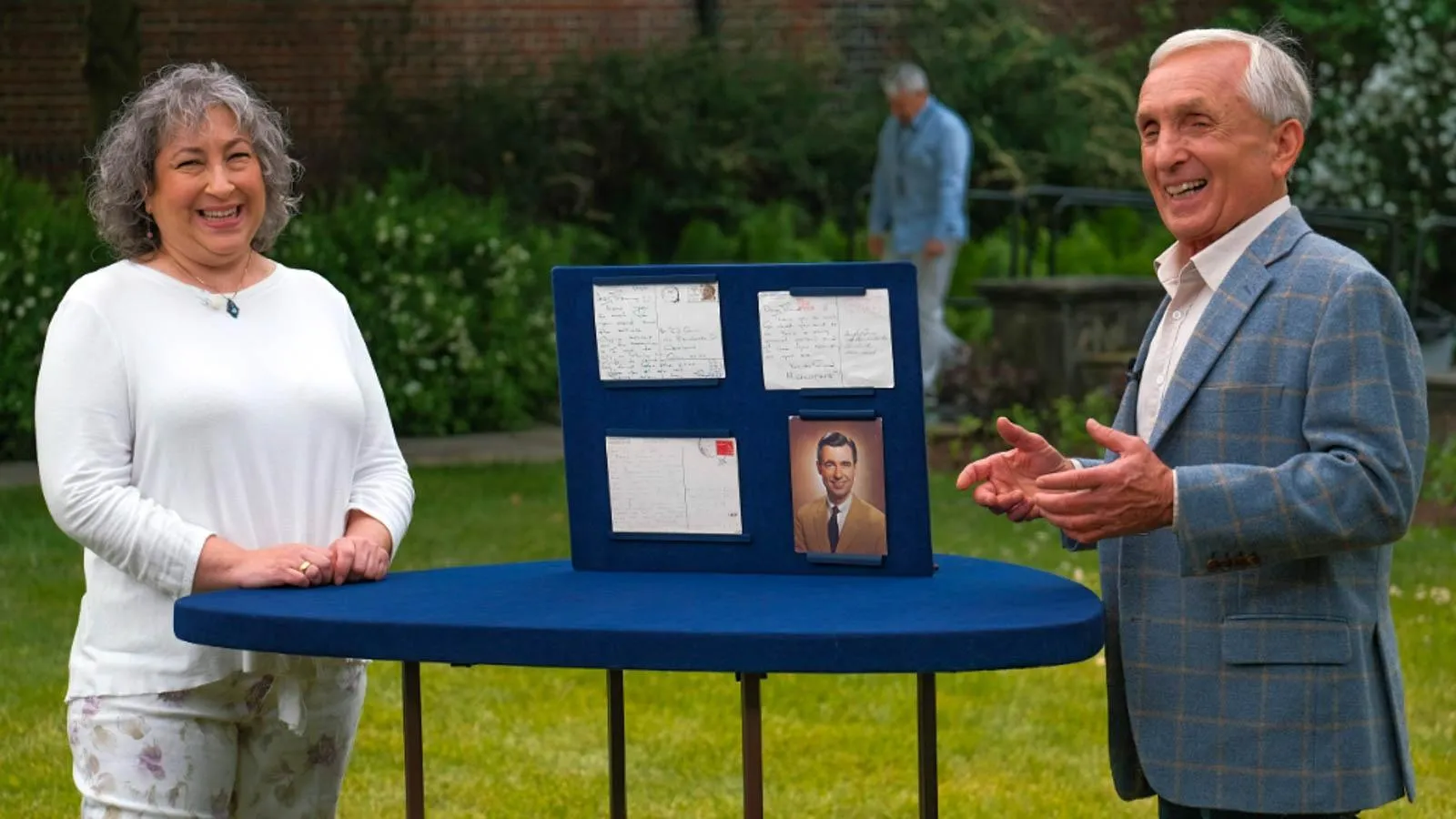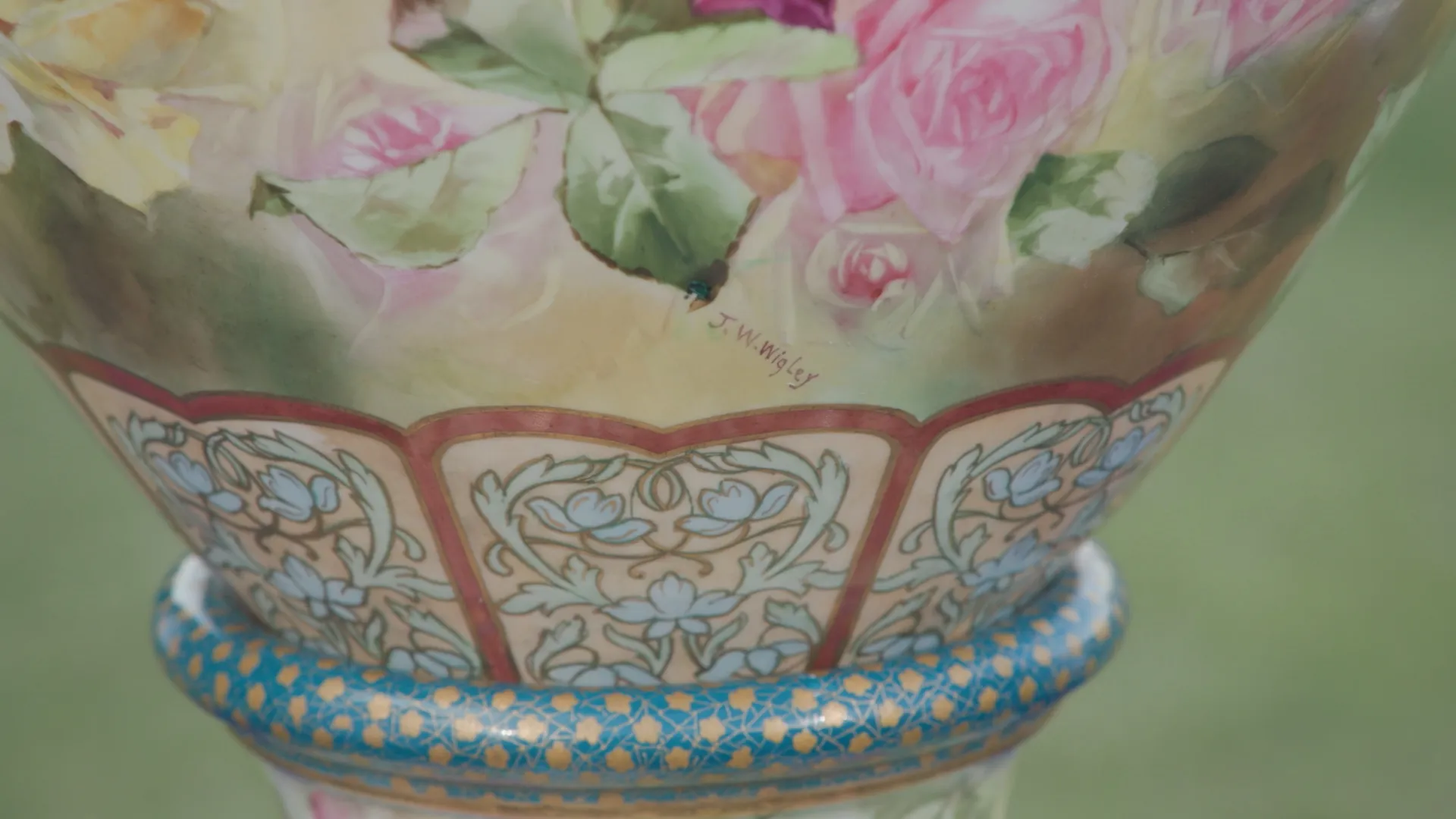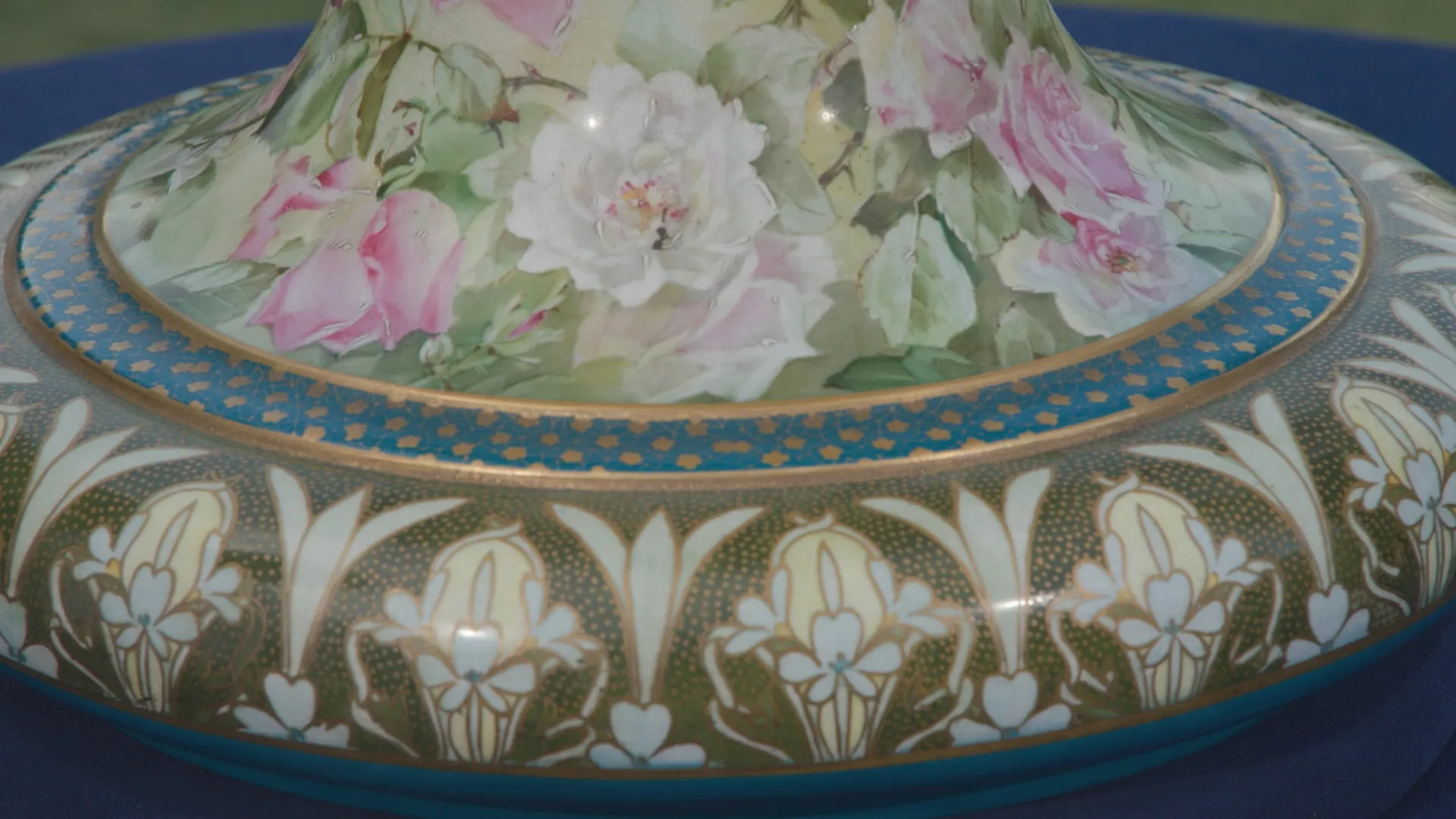GUEST: Well, my father was a, uh, Naval officer during the Second World War, and he went in with the first occupying forces in Japan. He was a supply officer, and when he came home, he brought this with him.
APPRAISER: So one of the characteristics of Japanese cloisonné– particularly from the late 19th century and early 20th century, which is the time frame in which this was made, toward the end of the Meiji dynasty...
GUEST: Mm-hmm.
APPRAISER: ...is the extraordinary, fine-quality workmanship that was the standard for the very best examples.
GUEST: Mm.
APPRAISER: And this would fall into one of those kind of top ten percent of examples that you can find.
GUEST: Terrific.
APPRAISER: So, the Japanese had, were introduced to working in cloisonné at a fairly early period of time, but China was much more known for working in cloisonné. And in the late 19th century– I think it was around 1870– there was a German scientist, chemist, that devised techniques...
GUEST: Mm-hmm.
APPRAISER: ...that vastly improved the ability to, to depict details in extraordinary fineness, and his name was Gottfried Wagner. And we're looking at not something that he made, necessarily.
GUEST: Mm-hmm.
APPRAISER: But something that is the product of his discoveries...
GUEST: Ah.
APPRAISER: ...and that technological kind of leap forward that made Japanese cloisonné stand head and shoulders above any other kind of similar example.
GUEST: Wow.
APPRAISER: This ovoid jar, more or less, is the form that you get in a number of different cultures, but it's a storage vessel.
GUEST: Ah.
APPRAISER: But I promise you, this was never used for storage.
GUEST: (laughing)
APPRAISER: It's really a, you know, almost a canvas on which this can be depicted, so that you get this marvelous kind of design in the front, a variety of different kinds of flowers in bloom, but you get these big, open expanses of this fabulous navy, dark blue, and then you have the birds that are in and amongst it. And then you also get this extraordinarily fine-quality work down at the foot.
GUEST: Mm-hmm.
APPRAISER: And on top of all this, we find that the metal is silver.
GUEST: Oh! Hm!
APPRAISER: So that's another indication of a higher quality. And you can see there's a lot of movement in there with the flowers, these are not static, and then there's the shading of colors. All that is done through very, very fine control of different shades of enamel paste, which are put in between the wires, the cloisons.
GUEST: Wow.
APPRAISER: And then it's fired at the end of that process, and it's polished down, and you end up with this very naturalistic appearance. It's very fine quality. And it's extraordinary that it survived in your family without damage, because essentially, it's glass plied over a metal base.
GUEST: And I had seven brothers and sisters. (laughs) So it did survive.
APPRAISER: Oh, God. (chuckling) And there wasn't, there was not an errant baseball in the house headed in that direction.
GUEST: Right.
APPRAISER: Do you have an idea?
GUEST: No, none whatsoever.
APPRAISER: Oh, you don't want to guess?
GUEST: $1,000.
APPRAISER: Try about $8,000.
GUEST: Wow! (chuckles)
APPRAISER: That would be for a replacement value, insurance value.
GUEST: Yes.
APPRAISER: I don't think any of us would've guessed that much.













